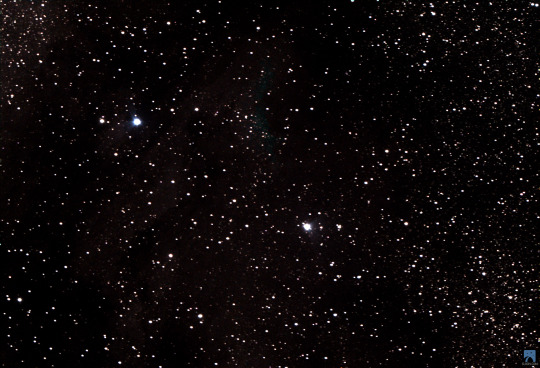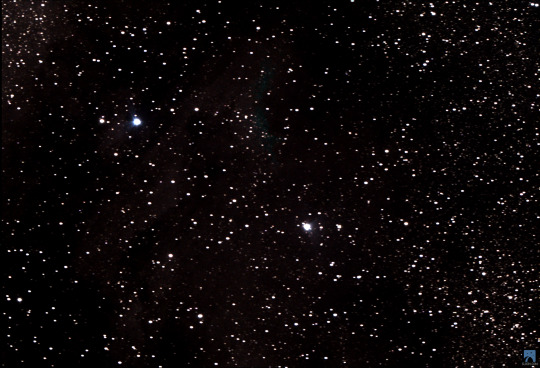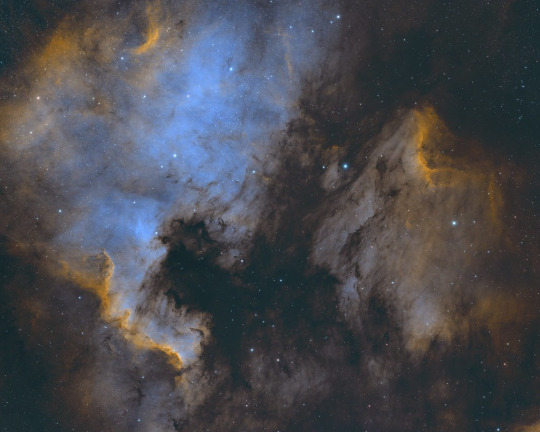#pelican nebula
Photo

Pelican Nebula in Cygnus © Eric Lagadec
#nebula#space#pelican nebula#astrophotography#galaxy#universe#planet#solar system#nasa#astronomy#stars#cosmos#night sky#planets
2K notes
·
View notes
Text
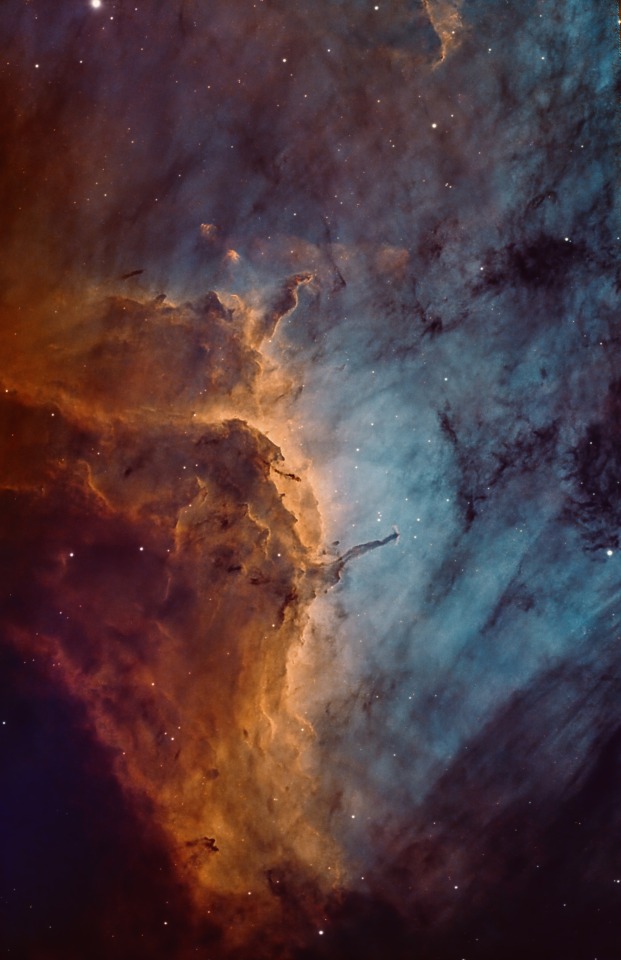
The Pelican Nebula, IC 5070 // Richard McInnis
#astronomy#astrophotography#nebula#emission nebula#star-forming region#pelican nebula#IC 5070#IC 5067#cygnus
210 notes
·
View notes
Text
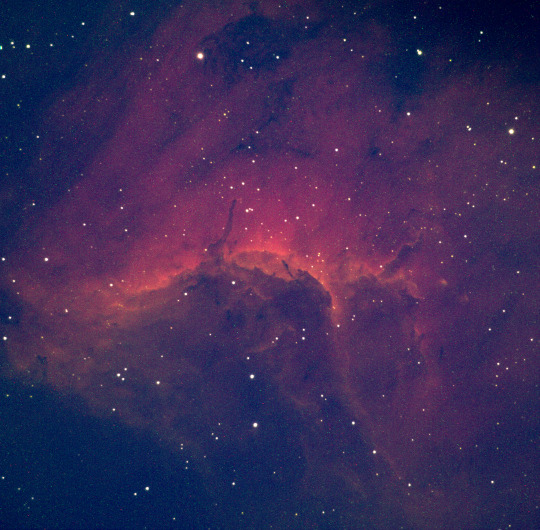

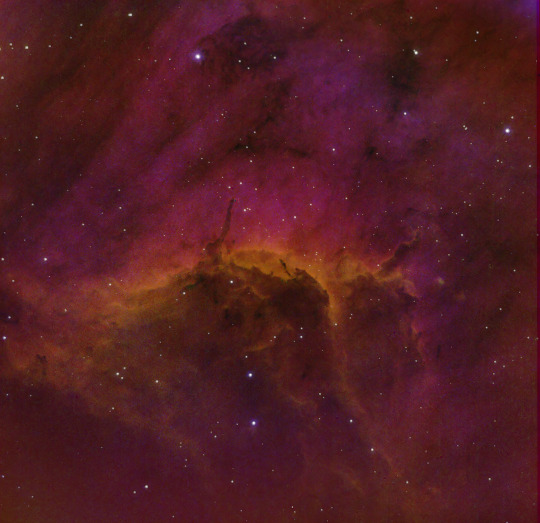
A comparison of three different edits of the Pelican Nebula in narrowband false color (SHO palette) using the same raw photographs. The first is a quick manual edit I did on the same night that I captured the data. The second is a manual edit with the same processing steps, also manual.
The final is using the new scripted post-processing pipeline I built, including denoising, gradient removal, and deconvolution steps. You can see a lot more detail in the fainter channels (especially the oxygen channel, which is blue in the picture), and a much smoother and less noisy picture overall.
124 notes
·
View notes
Text

The Pelican Nebula (also known as IC 5070 and IC 5067)
is an H II region associated with the North America Nebula in the constellation Cygnus.
The Pelican is much studied because it has a particularly active mix of star formation and evolving gas clouds.
The light from young energetic stars is slowly transforming cold gas to hot and causing an ionization front gradually to advance outward.
Notice all the dark nebula present in this FOV, but I really like the large well defined mountains of gas and dust at the center.
Particularly dense filaments of cold gas are seen to still remain, and among these are two jets emitted from the Herbig���Haro object 555.
Celestron RASA 8" F2.2 Scope, ZWO 294MC cooled Cmos Camera, Starizona NBZ UHS Filter, Bisque MyT Mount, ASI Air Plus via Wi-Fi
24 x 300 sec. sub exposures, 120 min total integration time.
From my backyard Observatory in Dayton, Ohio(bortle8) on 07-03-2023.
DSS, Pixinsight, and Adobe Raw 2023.
Courtesy: Galactic Images by John Chumack
#art#cosmos#cosmic#universe#blast#space#wallpaper#photography#stars#galactic#cosmology#john chumack#nebula#pelican nebula#ohio
30 notes
·
View notes
Text

The Pelican Nebula
IC 5070 & IC 5067
Constellation Cygnus.
Distance: 2,000 ly
June 24, 2023 -Montcada i Reixac
#astrophotography#urban astrophotography#astrophotos#astro observations#cosmos#original photographers#astronomy#universe#original photographic works#pelican nebula#nebulas
19 notes
·
View notes
Photo


#Pelican Nebula#nebula#IC 5070#IC 5067#space#astronomy#astrophotography#religion is a mental illness
23 notes
·
View notes
Photo
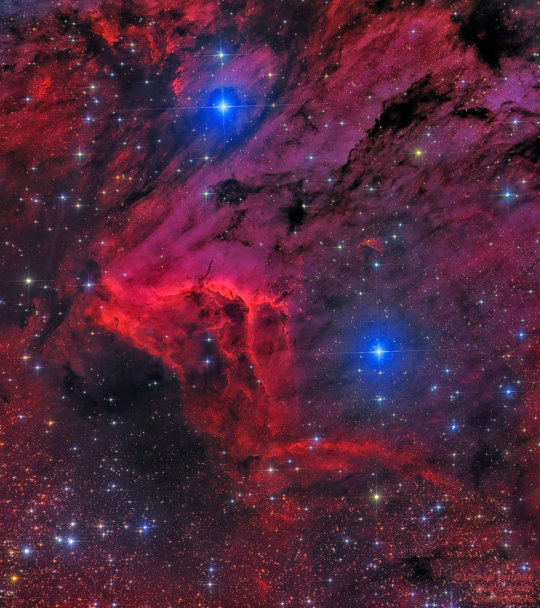
IC 5070, Pelican
#Astronomy#NASA#Night#Sky#Stars#Space#Science#Universe#Cosmos#Cosmic#Solar System#Pelican#Nebula#Galaxy#Constellations#Constellation#Rainbow#Bright
3K notes
·
View notes
Photo

Stars, Dust, Pillars, and Jets in the Pelican Nebula #NASA https://ift.tt/NagP5F9
0 notes
Photo
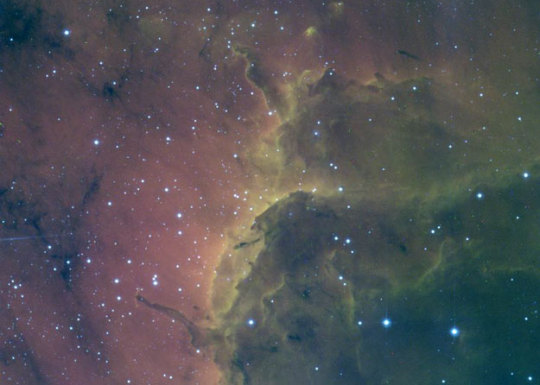
Pelican Nebula Ionization Front
Credits: John Bally, U. Colorado, KPNO 0.9-m Telescope, NOAO, AURA, NSF
89 notes
·
View notes
Text
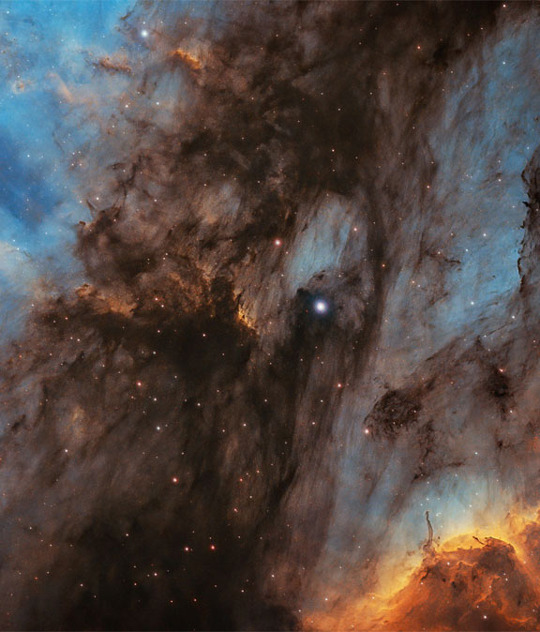
The Pelican Nebula Close-up ©
#nebula#nasa#apod#astrophotography#pelican nebula#stars#night sky#space#universe#planet#astronomy#cosmos#galaxy#planets#solar system
993 notes
·
View notes
Text
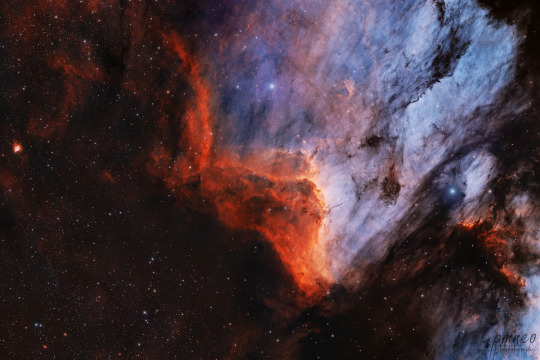
The Pelican Nebula, IC 5070 // pmneo
#astronomy#astrophotography#nebula#emission nebula#star-forming region#pelican nebula#IC 5070#IC 5067#cygnus
64 notes
·
View notes
Photo

IC 5070 ~ The Pelican Nebula
108 notes
·
View notes
Text
Pelican nebula IC 5070

IC 5070 or the Pelican Nebula one of the more prominent parts of the many nebulae in the area of the constellation Swan.
These extended nebulae of hydrogen and oxygen are located about 2000 light-years away and were already discovered by Max Wolf in 1891.
Object type: Emission nebula
Constellation: Swan / Cygnus
Total exposure: 576 minutes
103 notes
·
View notes
Photo

2023 August 7
The Pelican Nebula in Gas, Dust, and Stars
Credit & Copyright: Abe Jones
Explanation: The Pelican Nebula is slowly being transformed. IC 5070 (the official designation) is divided from the larger North America Nebula by a molecular cloud filled with dark dust. The Pelican, however, receives much study because it is a particularly active mix of star formation and evolving gas clouds. The featured picture was produced in three specific colors -- light emitted by sulfur, hydrogen, and oxygen -- that can help us to better understand these interactions. The light from young energetic stars is slowly transforming the cold gas to hot gas, with the advancing boundary between the two, known as an ionization front, visible in bright orange on the right. Particularly dense tentacles of cold gas remain. Millions of years from now, the Pelican nebula, bounded by dark nebula LDN 935, might no longer be known as the Pelican, as the balance and placement of stars and gas will surely leave something that appears completely different.
∞ Source: apod.nasa.gov/apod/ap230807.html
88 notes
·
View notes
